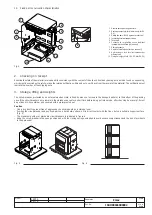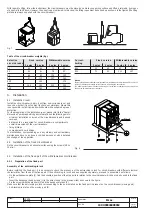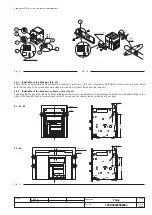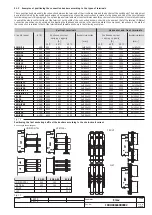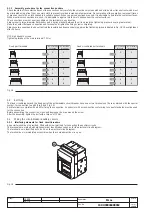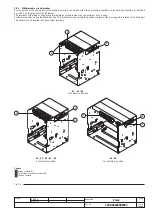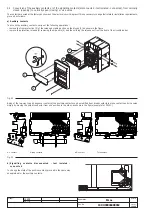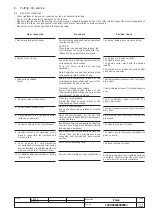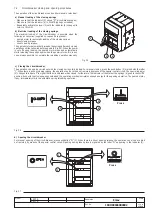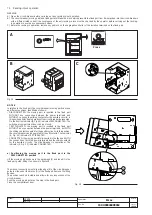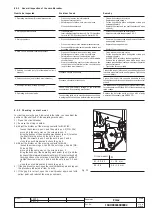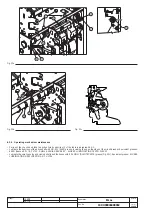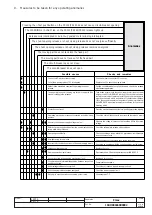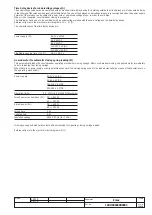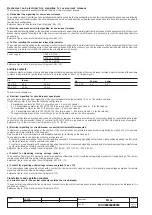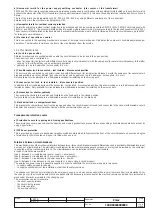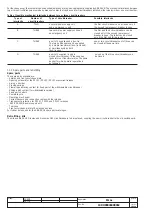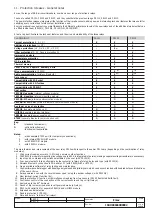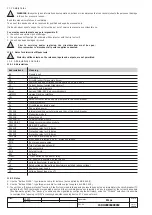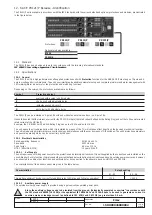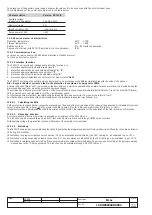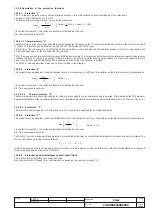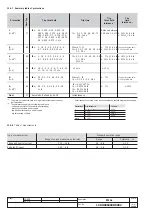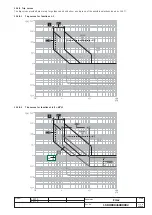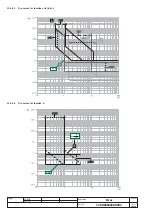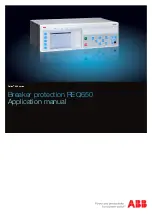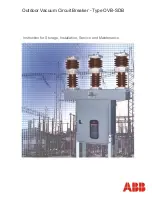
L2234
L2778
Emax
21/158
Doc. No.
Model
Apparatus
Scale
Page No.
1SDH000460R0002
8.3.2
General inspection of the circuit-breaker
8.3.3 Checking contact wear
In order to ensure the gap A indicated in the table, you can adjust the
position of the shaft and of the operating mechanism.
1) Open the circuit-breaker
2) Remove the arcing chamber
3a) Adjust the distance of the moving contacts for E1-E2-E3:
- loosen the screws in pos. 1 and the nuts in pos. 3 (FIG. 33a)
- proceed in the same way on the screws in pos. 2
- bring the bushes of the operating mechanism (pos. 5) to rest on
the shaft, tacking action on the nuts in pos. 4
- tighten the screws in pos.1 and the nuts in pos. 3 and 4
- close the circuit-breaker and check the gap A
3b) Adjust the distance of the moving contacts for E4-E6:
- loosen the screws in pos. 1 and 6, the nuts in pos. 3 and 8 (FIG.
33a and 33b)
- proceed in the same way on the screws in pos. 2
- bring the bushes of the operating mechanism (pos. 5) and the
bushes of the intermediate abutments (pos. 9) to rest on the shaft,
tacking action on the nuts in pos. 4 and the screws in position 7
- tighten the screws in pos. 1 and 6, and the nuts in pos. 3, 4 and
8
- close the circuit-breaker and check the gap A
4) If the gap A is not correct, open the circuit-breaker again and repeat
the procedure indicated in item 3a or 3b
5) If the gap A is correct, open the circuit-breaker again, seal with
yellow paint and reinstall the arcing chambers.
Circuit-breaker
E1 - E2 - E3
1
÷
1.9 mm
E4 - E6
0.8
÷
1.5 mm
Fig. 33
A
Item to be inspected
1 Operating mechanism/Electrical accessories
2 Arcing and main contacts
3 Arcing chambers
4 Main circuit - Busbars - Insulating contact
5 Earthing contacts (only for withdrawable circuit-
breaker)
6 Earth connection (only for fixed circuit-breaker)
7 Auxiliary circuit power supply voltage
8 Operating and control parts
Problem found
– Presence of dust on the internal parts
– Springs deformed or rusty
– Safety rings out of place, nuts or screws loose
– Wires and straps detached
– Traces of wear
– Incorrect adjustments: distance A - Fig. 33 is less than
1 mm for E1-E2-E3 or less than 0.8 mm for E4-E6
– Presence of fumes or dust
– Presence of cracks in the external plastic structure
– Excessive difference in wear between the first and last
arc extinguishing plate
– Presence of dust or dirt on the insulating parts
– Safety rings out of place, screws or nuts loose
– Deformation or cracks of the insulating parts
– Insulating contacts oxidized (only for withdrawable
circuit-breaker)
– Wear or overheating marks or screws loose on the
connections to the terminals of the circuit-breaker
(only for fixed circuit-breaker)
Presence of rust or loose nuts
Presence of rust and/or loose nuts
Check the power supply voltage of the electrical
accessories of the operating mechanism
The operating tests, which must be carried out as shown
in paragraph 6.1 have shown defects in the components
Remedy
– Clean with brushes or dry cloths
– Replace damaged springs
– Put the rings back in place and tighten screws and
nuts appropriately
– Replace the straps and connect the detached wires
correctly
– Smooth the contacts with emery cloth
– Adjust according to the paragraph 8.3.3
–
Remove with compressed air and remove the fumes
and any slag with a brush
–
Replace the arcing chamber
– Replace the arcing chamber
– Clean with a brush or dry cloths
– Put the rings back in place and tighten screws and
nuts appropriately
– Ask ABB SACE to replace the damaged parts
– Remove the shutters and clean with a rough cloth
soaked in a suitable solvent and lubricate moderately
with neutral grease
– Tighten the screws suitably
Clean with a rough cloth soaked in a suitable solvent and
lubricate moderately with neutral grease. Tighten the
nuts completely
Clean with a rough cloth soaked in a suitable solvent,
fully tighten the earth connection and cover with neutral
grease
The releases and locking devices must operate normally
for values between 85% and 110% of the corresponding
rated voltage
Replace the defective parts or those with a faulty
operation (if necessary, ask ABB SACE)

